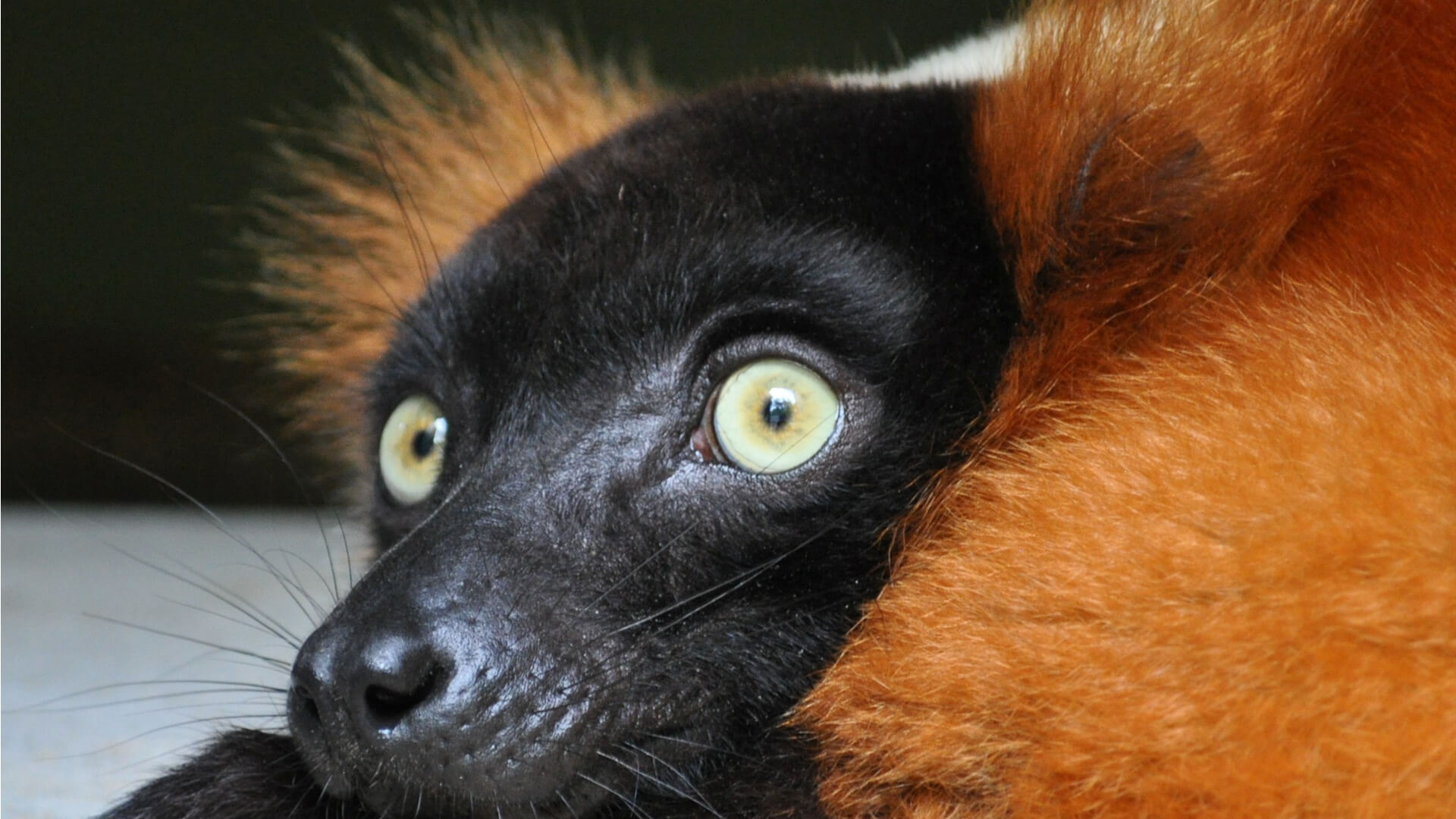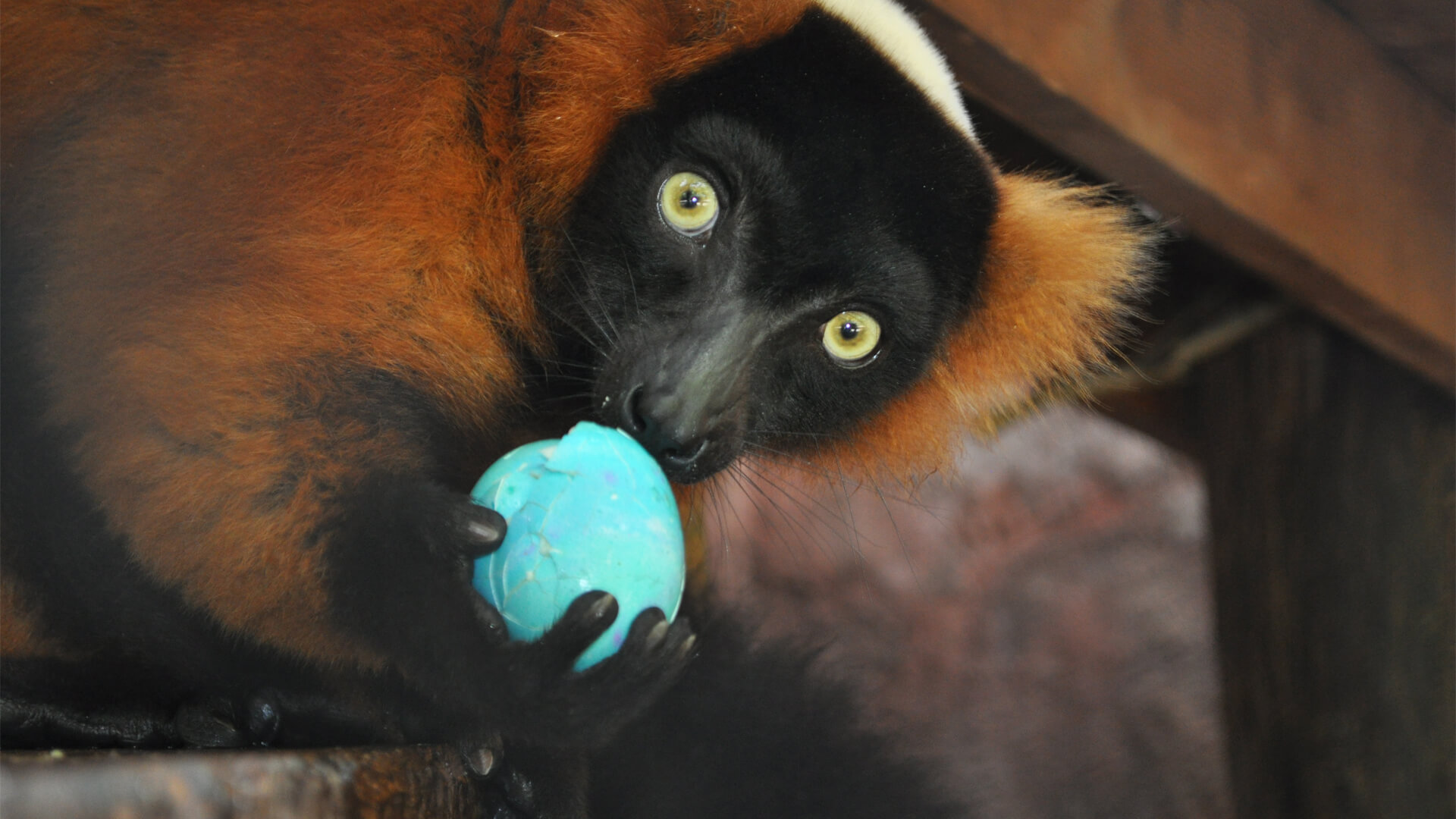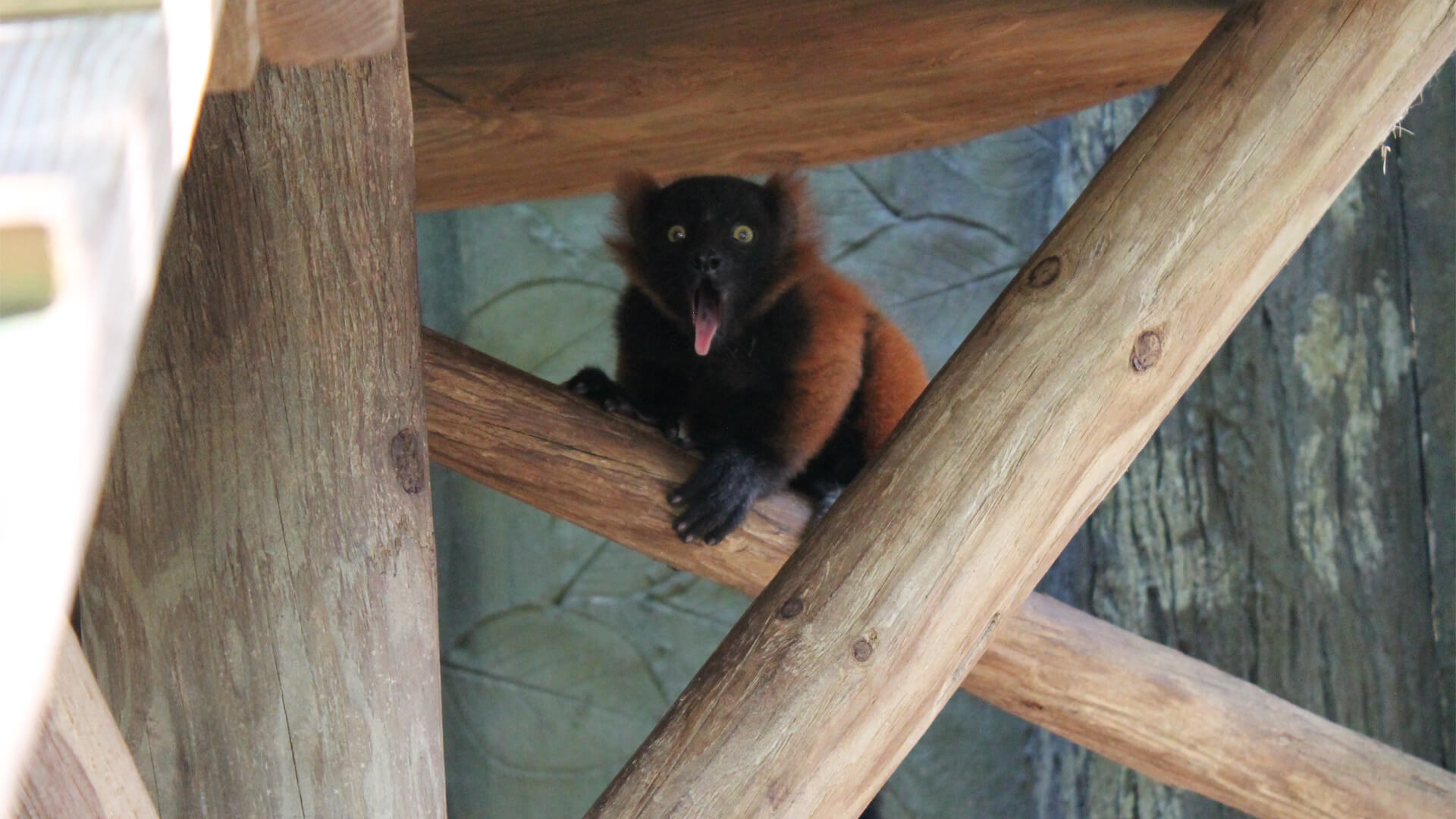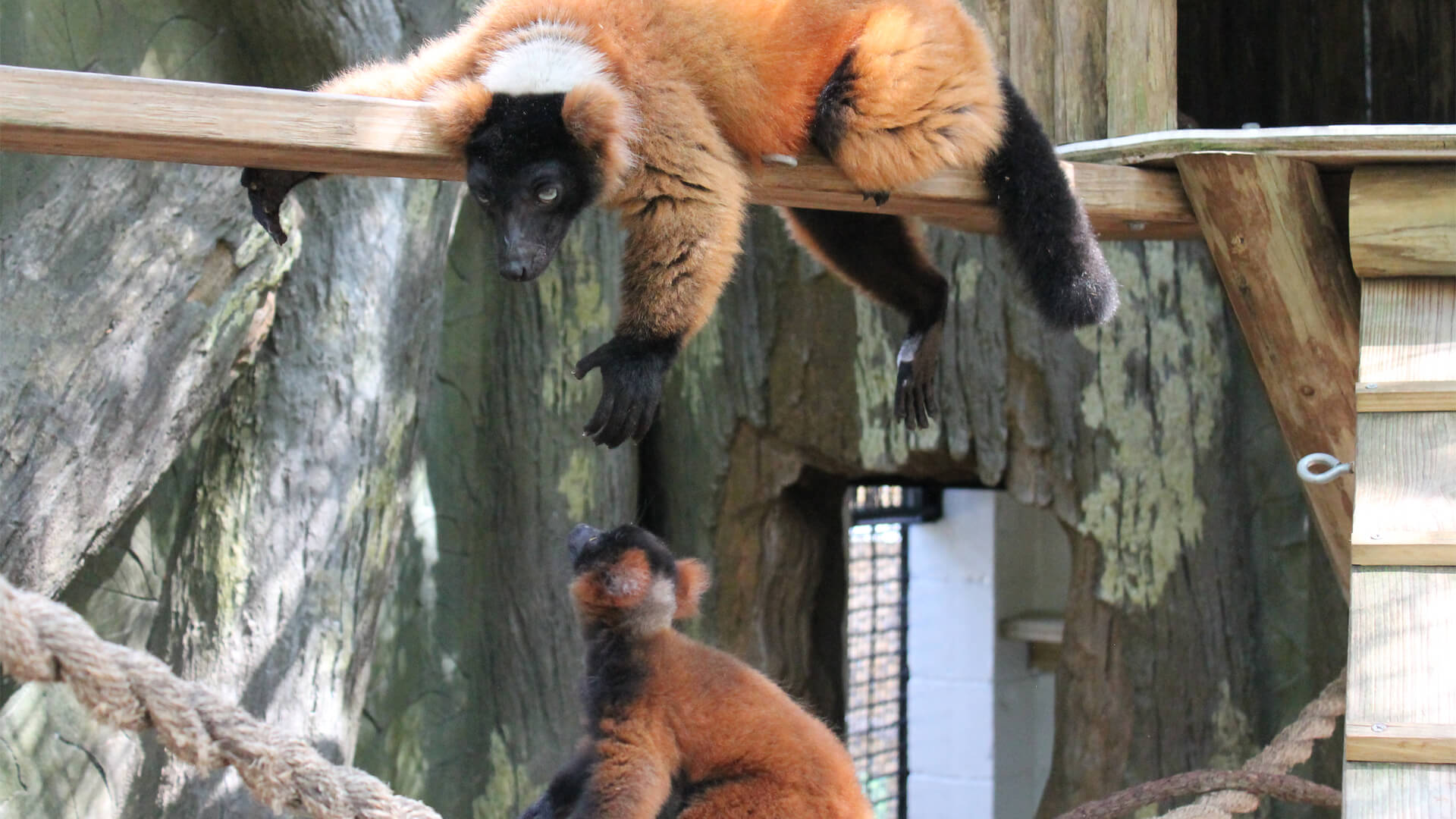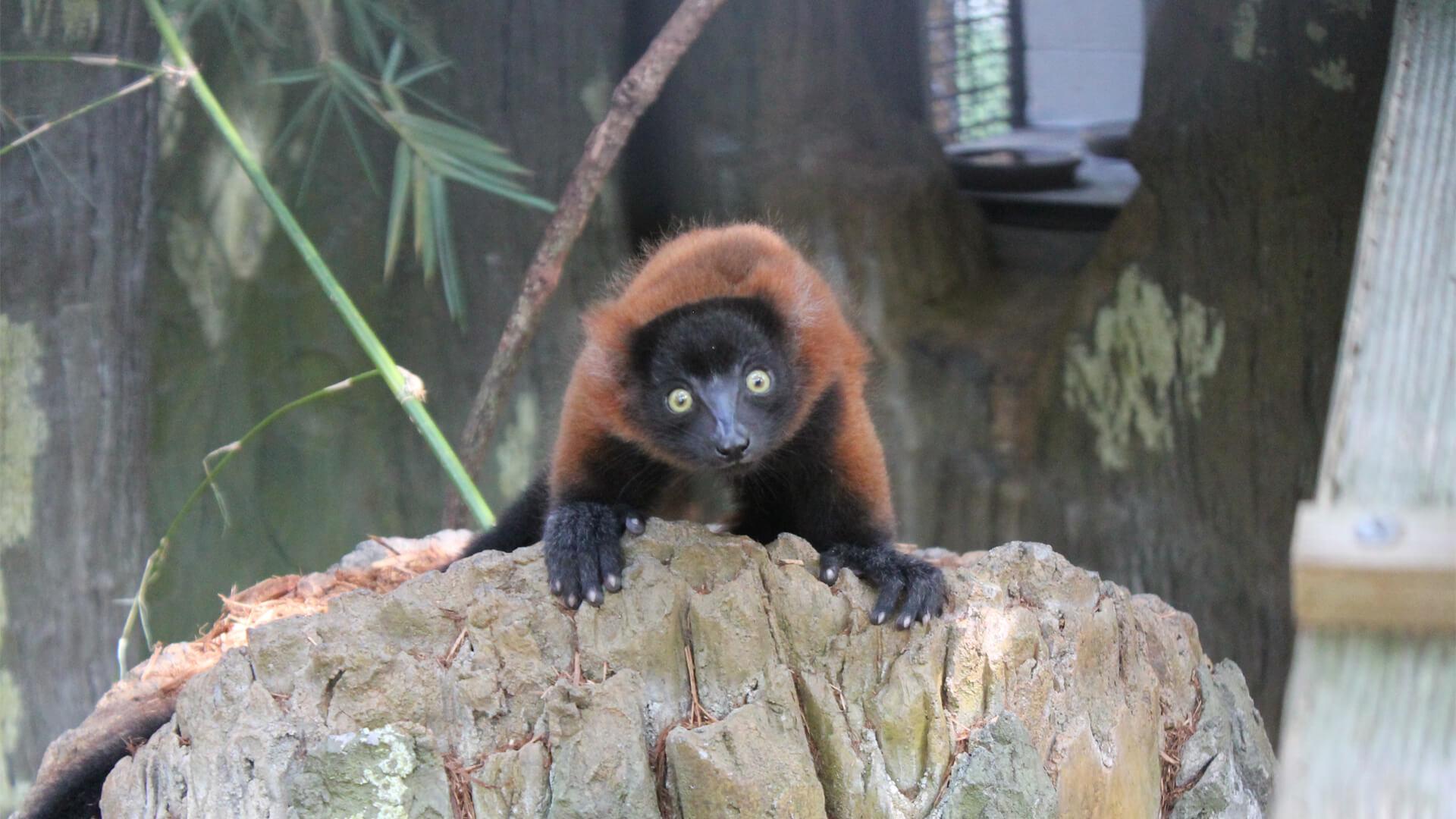
Red-ruffed lemurs are some of the most vocal of all the primate species in the world. The calls of our lemurs can be heard throughout the entire Zoo. Females are dominant in red-ruffed lemur society, with her offspring second on the totem pole above dad. Their loud calls can be a result of a food dispute, seeing a hawk flying overhead, or just making sure they know where every family member is.
Red-ruffed lemurs are characterized by dark reddish brown fur, with black and white markings on their head and a black tail. These lemurs are unique among the other species of lemurs, in that their babies are unable to cling to the mothers back. Instead, the mother lemur will "park" her babies in a nest or in the crotch of a tree while she forages nearby. The red-ruffed lemur is one of the larger lemur species. It prefers to make its home in tall, mature trees. Unfortunately, these trees are also highly desirable to loggers. Habitat loss and destruction are the main threats to this species.

Our male red-ruffed lemur has sired three litters here at Central Florida Zoo in the past, and our female gave birth in 2016—making them a great couple and very experienced parents!

Mary
Lemurs have a "toothcomb". Their teeth on their lower jaw lie flat. This "comb" is used for grooming and picking out insects.
Northeastern peninsula of Madagascar
Dense tropical forest
22 inches long | 20 inche tail | 10 pounds
Fruit, leaves, flowers, nectar
Fossa
Warning calls, climbing abilities
Mother red ruffed lemurs give birth to 1-5 babies
Critically Endangered
15-20 years
